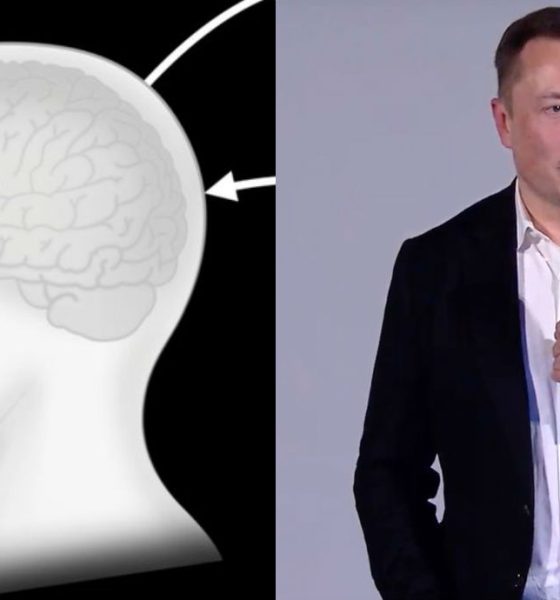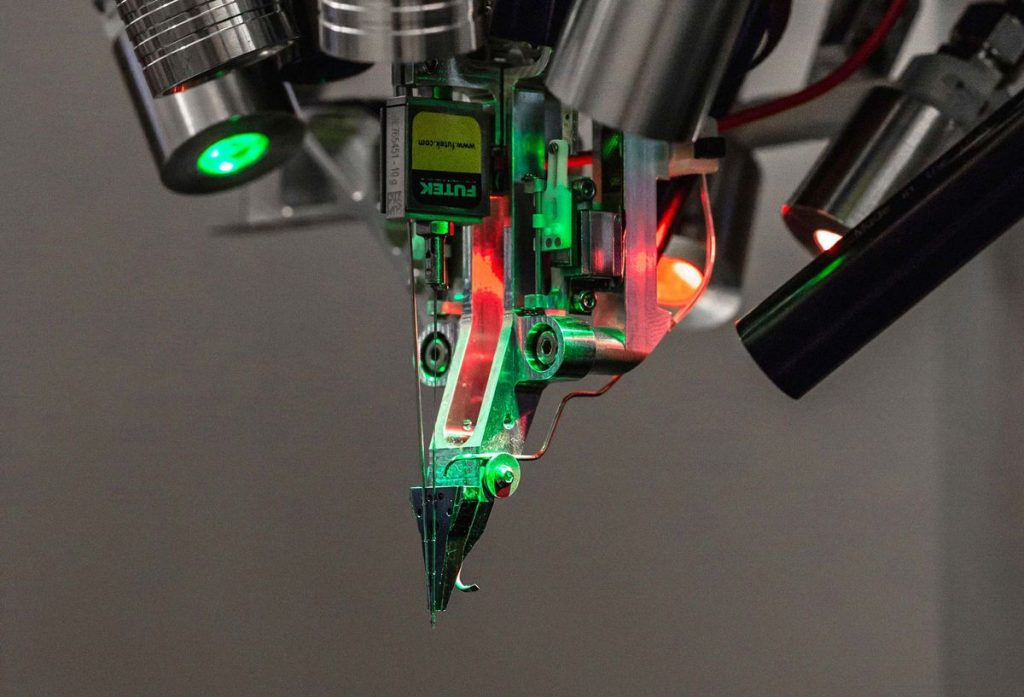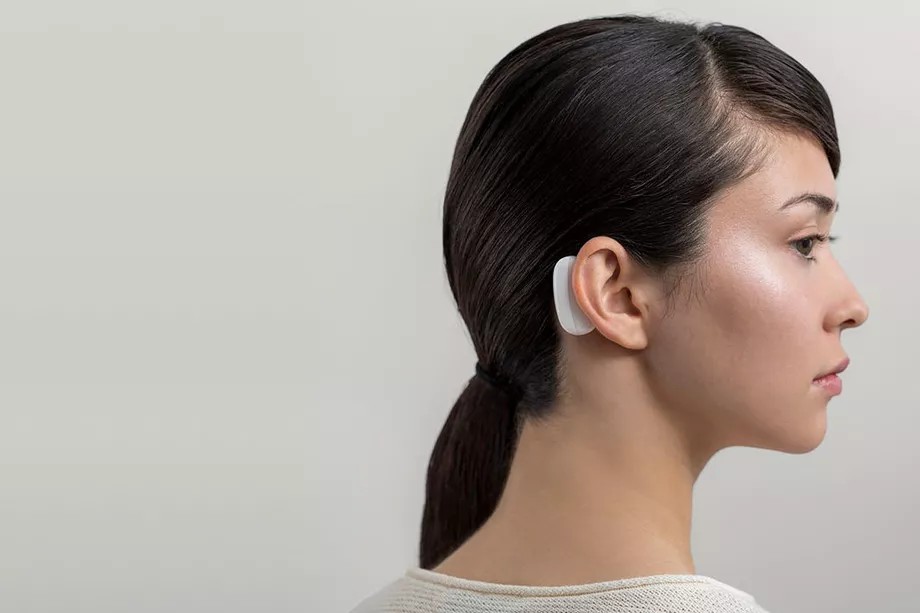

News
Elon Musk’s Neuralink targets human trials for brain-machine interface in 2020
After operating in stealth mode for the past two years, Neuralink, the brain-machine interface startup co-founded by SpaceX and Tesla CEO Elon Musk, has revealed some of the innovations that it has been developing. The company also announced that it is aiming to start implanting devices in humans by 2020, starting with paralyzed individuals who could then control phones or computers through their brain-machine implants.
Neuralink focused on two innovations on Tuesday’s presentation. The first involved flexible “threads” that are incredibly thin, measuring between 4 and 6 μm or about 1/3 the diameter of human hair. These threads are capable of transferring high volumes of data, with a white paper published by the company hinting at “as many as 3,072 electrodes per array distributed across 96 threads.” With the threads being incredibly thin, they would not damage the brain.
Another key technology revealed by Neuralink on its recent presentation was a custom made robot designed to embed implants into the brain. Thanks to computer vision and lenses, the robot will be able to place implants on patients without hitting or damaging blood vessels, reducing damage to the brain and scar tissue. Neuralink researcher Philip Sabes noted that “because these things are so thin and flexible, the idea is that they move with the tissue instead of tearing the tissue.”

Neuralink has performed at least 19 surgeries on animals with its robots, and so far, the machines have successfully placed the threads about 87% of the time. One of these subjects, a rather hefty rat that was shown off to the press, was fitted with a wired prototype of the company’s brain-machine interface. During the press demo, Sabes mentioned that the amount of data gathered from the rodent was about ten times greater than what is possible with today’s sensors.
In his presentation, Elon Musk stated that the evolution of Neuralink’s tech would be gradual, though he did mention that the company’s goal is a form of “symbiosis” with technology. “It’s not going to be suddenly Neuralink will have this neural lace and start taking over people’s brains. This is going to sound pretty weird, but ultimately, we will achieve symbiosis with artificial intelligence. This is not a mandatory thing. It is a thing you can choose to have if you want. This is something that I think will be really important on a civilization-level scale,” he remarked.
While the technologies shared by Neuralink on Tuesday seemed borderline science fiction, Neuralink president Max Hodak noted that similar innovations have actually been introduced and implemented in the past. “Neuralink didn’t come out of nowhere; there’s a long history of academic research here. We’re, in the greatest sense, building on the shoulders of giants,” he said. Nevertheless, Neuralink’s goal of directly reading neural spikes in a minimally-intrusive way remains notably ambitious.

The potential for such technologies is enormous. Implants such as BrainGate, which was developed initially at Brown University, were used in cases such as those of Matthew Nagle, who suffered from a spinal cord injury. Back in 2006, Nagle was able to learn how to use a computer using brain implants, at one point even playing Pong with his mind. In its presentation, Neuralink noted that its brain implants could be used for several individuals afflicted by Parkinson’s Disease, Dystonia, Epilepsy, OCD, Depression, Chronic Pain, and Tinnitus, among many.
Yet, despite its impressive innovations and its lofty goals, it should be noted that Neuralink is still a long way from achieving its targets. Dr. Matthew MacDougall, head surgeon at Neuralink, mentioned this while discussing how Neuralink implants could be as seamless as Lasik in the future. “There is a whole FDA process we have to go though. We haven’t done that yet,” he said.
So why the presentation? As noted by Elon Musk, Tuesday’s event is, at its core, an invitation for interested individuals who would like to work on the innovations that Neuralink is pursuing. With this open invitation, it would not be surprising if the company attracts an impressive number of talent in the near future. But now it’s time for you to vote. Will you be open to getting a brain-machine interface implant from Neuralink in the future?

Elon Musk
Delaware Supreme Court reinstates Elon Musk’s 2018 Tesla CEO pay package
The unanimous decision criticized the prior total rescission as “improper and inequitable,” arguing that it left Musk uncompensated for six years of transformative leadership at Tesla.

The Delaware Supreme Court has overturned a lower court ruling, reinstating Elon Musk’s 2018 compensation package originally valued at $56 billion but now worth approximately $139 billion due to Tesla’s soaring stock price.
The unanimous decision criticized the prior total rescission as “improper and inequitable,” arguing that it left Musk uncompensated for six years of transformative leadership at Tesla. Musk quickly celebrated the outcome on X, stating that he felt “vindicated.” He also shared his gratitude to TSLA shareholders.
Delaware Supreme Court makes a decision
In a 49-page ruling Friday, the Delaware Supreme Court reversed Chancellor Kathaleen McCormick’s 2024 decision that voided the 2018 package over alleged board conflicts and inadequate shareholder disclosures. The high court acknowledged varying views on liability but agreed rescission was excessive, stating it “leaves Musk uncompensated for his time and efforts over a period of six years.”
The 2018 plan granted Musk options on about 304 million shares upon hitting aggressive milestones, all of which were achieved ahead of time. Shareholders overwhelmingly approved it initially in 2018 and ratified it once again in 2024 after the Delaware lower court struck it down. The case against Musk’s 2018 pay package was filed by plaintiff Richard Tornetta, who held just nine shares when the compensation plan was approved.
A hard-fought victory
As noted in a Reuters report, Tesla’s win avoids a potential $26 billion earnings hit from replacing the award at current prices. Tesla, now Texas-incorporated, had hedged with interim plans, including a November 2025 shareholder-approved package potentially worth $878 billion tied to Robotaxi and Optimus goals and other extremely aggressive operational milestones.
The saga surrounding Elon Musk’s 2018 pay package ultimately damaged Delaware’s corporate appeal, prompting a number of high-profile firms, such as Dropbox, Roblox, Trade Desk, and Coinbase, to follow Tesla’s exodus out of the state. What added more fuel to the issue was the fact that Tornetta’s legal team, following the lower court’s 2024 decision, demanded a fee request of more than $5.1 billion worth of TSLA stock, which was equal to an hourly rate of over $200,000.
Delaware Supreme Court Elon Musk 2018 Pay Package by Simon Alvarez
News
Tesla Cybercab tests are going on overdrive with production-ready units
Tesla is ramping its real-world tests of the Cybercab, with multiple sightings of the vehicle being reported across social media this week.

Tesla is ramping its real-world tests of the Cybercab, with multiple sightings of the autonomous two-seater being reported across social media this week. Based on videos of the vehicle that have been shared online, it appears that Cybercab tests are underway across multiple states.
Recent Cybercab sightings
Reports of Cybercab tests have ramped this week, with a vehicle that looked like a production-ready prototype being spotted at Apple’s Visitor Center in California. The vehicle in this sighting was interesting as it was equipped with a steering wheel. The vehicle also featured some changes to the design of its brake lights.
The Cybercab was also filmed testing at the Fremont factory’s test track, which also seemed to involve a vehicle that looked production-ready. This also seemed to be the case for a Cybercab that was spotted in Austin, Texas, which happened to be undergoing real-world tests. Overall, these sightings suggest that Cybercab testing is fully underway, and the vehicle is really moving towards production.
Production design all but finalized?
Recently, a near-production-ready Cybercab was showcased at Tesla’s Santana Row showroom in San Jose. The vehicle was equipped with frameless windows, dual windshield wipers, powered butterfly door struts, an extended front splitter, an updated lightbar, new wheel covers, and a license plate bracket. Interior updates include redesigned dash/door panels, refined seats with center cupholders, updated carpet, and what appeared to be improved legroom.
There seems to be a pretty good chance that the Cybercab’s design has been all but finalized, at least considering Elon Musk’s comments at the 2025 Annual Shareholder Meeting. During the event, Musk confirmed that the vehicle will enter production around April 2026, and its production targets will be quite ambitious.
News
Tesla gets a win in Sweden as union withdraws potentially “illegal” blockade
As per recent reports, the Vision union’s planned anti-Tesla action might have been illegal.

Swedish union Vision has withdrawn its sympathy blockade against Tesla’s planned service center and showroom in Kalmar. As per recent reports, the Vision union’s planned anti-Tesla action might have been illegal.
Vision’s decision to pull the blockade
Vision announced the blockade in early December, stating that it was targeting the administrative handling of Tesla’s facility permits in Kalmar municipality. The sympathy measure was expected to start Monday, but was formally withdrawn via documents sent to the Mediation Institute and Kalmar Municipality last week.
As noted in a Daggers Arbete report, plans for the strike were ultimately pulled after employer group SKR highlighted potential illegality under the Public Employment Act. Vision stressed its continued backing for the Swedish labor model, though Deputy negotiation manager Oskar Pettersson explained that the Vision union and IF Metall made the decision to cancel the planned strike together.
“We will not continue to challenge the regulations,” Petterson said. “The objection was of a technical nature. We made the assessment together with IF Metall that we were not in a position to challenge the legal assessment of whether we could take this particular action against Tesla. Therefore, we chose to revoke the notice itself.”
The SKR’s warning
Petterson also stated that SKR’s technical objection to the Vision union’s planned anti-Tesla strike framed the protest as an unauthorized act. “It was a legal assessment of the situation. Both for us and for IF Metall, it is important to be clear that we stand for the Swedish model. But we should not continue to challenge the regulations and risk getting judgments that lead nowhere in the application of the regulations,” he said.
Vision ultimately canceled its planned blockade against Tesla on December 9. With Vision’s withdrawal, few obstacles remain for Tesla’s long-planned Kalmar site. A foreign electrical firm completed work this fall, and Tesla’s Careers page currently lists a full-time service manager position based there, signaling an imminent opening.








